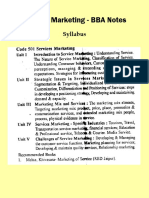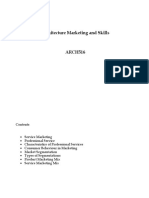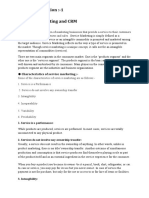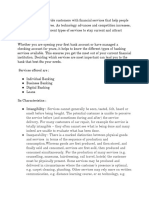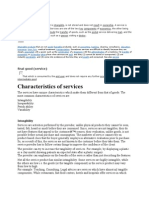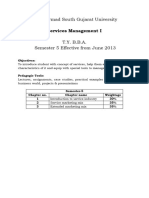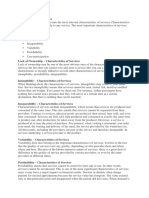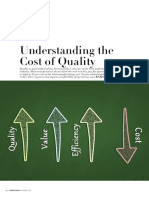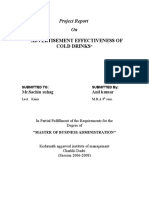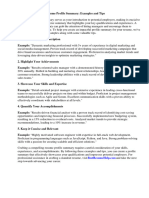0% found this document useful (0 votes)
64 views8 pagesFinancial Products in Service Spectrum
Financial services ensure the smooth flow of financial activities in the economy and include banking, insurance, investment services, and more. They help raise and deploy funds efficiently through services like bill discounting, factoring, securitization, and more.
Financial products and services have several key characteristics. They are intangible and difficult for consumers to evaluate. They are also inseparable, as production and consumption occur simultaneously involving both the service provider and customer. Additionally, services are perishable and cannot be stored, leading to issues with demand fluctuations. Financial services also involve fiduciary responsibility over customer funds and regular two-way information exchange between provider and customer over time.
Uploaded by
zafrinmemonCopyright
© Attribution Non-Commercial (BY-NC)
We take content rights seriously. If you suspect this is your content, claim it here.
Available Formats
Download as DOCX, PDF, TXT or read online on Scribd
0% found this document useful (0 votes)
64 views8 pagesFinancial Products in Service Spectrum
Financial services ensure the smooth flow of financial activities in the economy and include banking, insurance, investment services, and more. They help raise and deploy funds efficiently through services like bill discounting, factoring, securitization, and more.
Financial products and services have several key characteristics. They are intangible and difficult for consumers to evaluate. They are also inseparable, as production and consumption occur simultaneously involving both the service provider and customer. Additionally, services are perishable and cannot be stored, leading to issues with demand fluctuations. Financial services also involve fiduciary responsibility over customer funds and regular two-way information exchange between provider and customer over time.
Uploaded by
zafrinmemonCopyright
© Attribution Non-Commercial (BY-NC)
We take content rights seriously. If you suspect this is your content, claim it here.
Available Formats
Download as DOCX, PDF, TXT or read online on Scribd
/ 8


